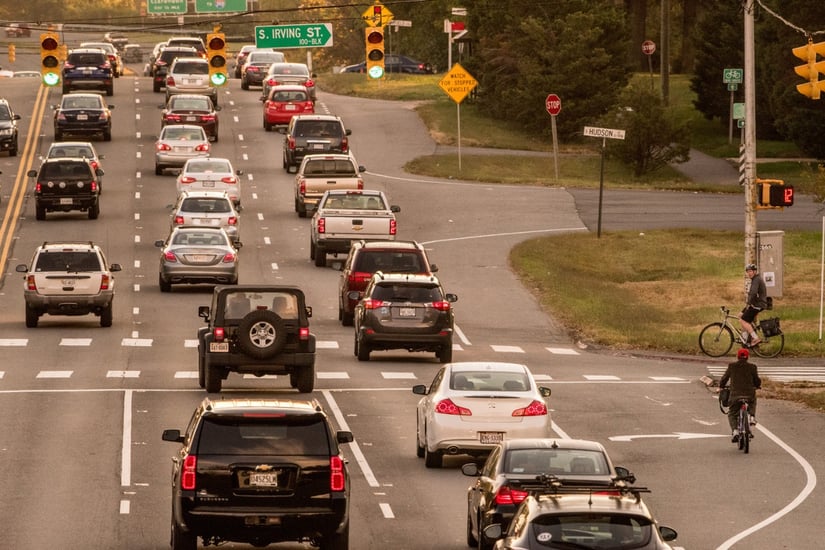Long gone are the days of Mad Men where smoke-filled offices were common place. When smoking was identified as a preventable killer and a threat to public health that had to be curbed, it was obvious it would require dramatic behavior change to shift social attitudes. Several decades later, we now find it hard to imagine that smoking in public places was ever allowed.
Re-imagining the future with different behaviors can be difficult, but we have to act now. In 2016, the US saw a dramatic surge in travel deaths. This included car crash fatalities as well as an increase in pedestrian deaths by cars. Car-related fatalities have affected all of us taking any mode, but the good news is that this phenomenon is preventable.

International Progress Towards Safer Streets
In the 1970s, the Netherlands saw a dramatic increase in car related deaths and public outcry ensued. They created a campaign advocating for safer streets for the most vulnerable people in society—children—called, “Stop de Kindermoord,” which literally translates to “Stop the Child Murder.” Dutch cities responded with traffic calming measures and shared space designs in neighborhoods called “woonerfs,” which dramatically decreased the number of fatal car crashes.
Along the same vein, the Danish decided that they wanted to have safer, healthier citizens which could be achieved by creating a more livable city. They invested in creating more bicycle and pedestrian infrastructure. By striving for this vision, the City of Copenhagen has transformed to become a place where over 50% of people commute by bike every day.
Driving in the Future of the US
Campaigns such as Vision Zero believe that no loss of life on our roads is acceptable. Such organizations re-frame the conversation to acknowledge that road deaths are preventable—not part of the game—and have helped us envision a safer and healthier future. Several US cities, including Washington, DC, are leading the way by adopting Vision Zero strategies and are actively making roads safer for all.
The adoption of Vision Zero in DC has opened several doors, including collecting and making the District’s crash data open and more accessible to the public. This allows advocates and civic programmers, like Transportation Techies group, to experiment with data and gain new insights that can be used to identify specific locations that require new interventions and safety strategies. It has also included education and enforcement campaigns aimed to protect our most vulnerable road users.

A future dedicated to the goal of zero car-related fatalities will be a healthier, more productive future for everyone sharing the road. This future of safer roads with adequate space and facilities for pedestrians and cyclists will also result in less congestion for motorists. Bicycling and walking produces benefits to society that are cost-effective and reverberates to everyone who shares the road.
What You Can Do
Local, state, and federal governments all play a role in creating and maintaining our transportation system. All sectors need to be involved in this re-visioning of safety and shift towards transportation planning practices that focus on all modes of transportation. They also need to be held accountable.
Shifting transportation goals, policies, and laws from a focus on the fast throughput of vehicles that entails a certain amount of crashes to finding modes that can safely transport people, aligns with the mission of transportation demand management and will improve the quality of getting around your local area. As constituents, it’s important to push for the adoption of Zero Vision policies and a shift to Complete Street design strategies, particularly at the local level. It's high time we commit to curbing our dangerous road addiction and enjoy the benefits of safe streets.
Read More, More Often
Interested in more blogs like this? Subscribe to our newsletter for the latest about transportation demand management in Arlington County, Virginia.
Photo Credit: Sam Kittner/Kittner.com for Arlington Transportation Partners


